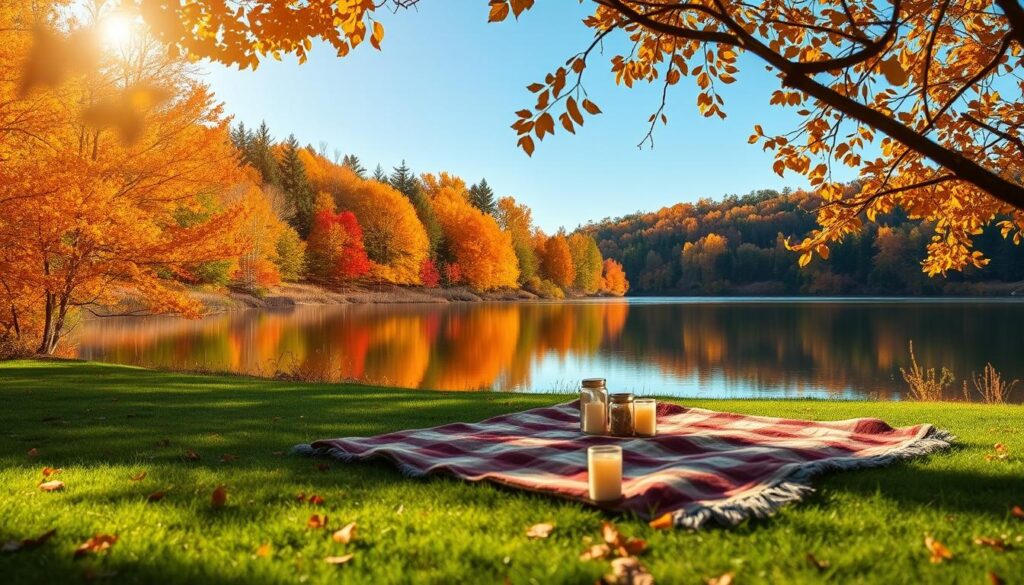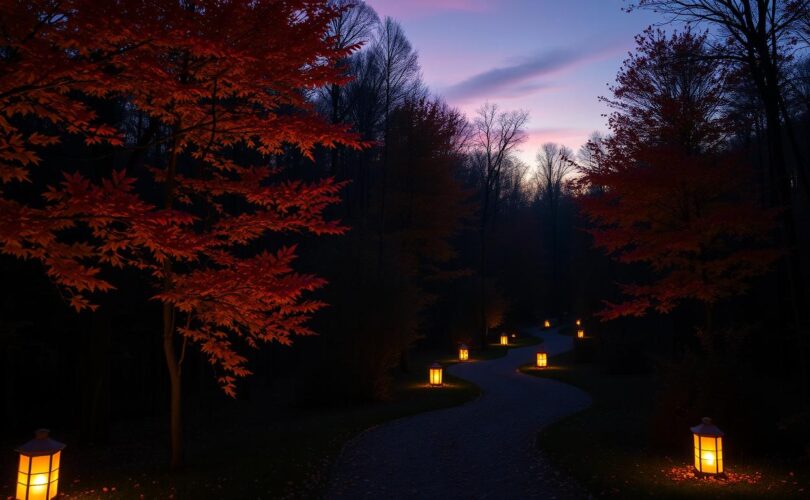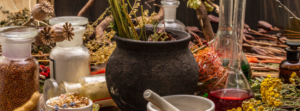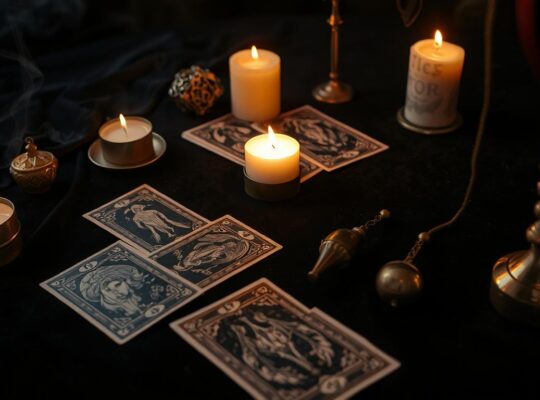As the days get shorter and the scenery changes, many feel drawn into autumn’s natural flow. But this shift can also bring a sense of darkness, both in the light and in our minds. It’s important to find self-care that boosts our health and spirit. This article will help you find light in fall’s darkness.
Key Takeaways
- Explore the natural rhythm and psychological impact of seasonal changes in autumn.
- Discover how to create a soothing self-care sanctuary during the darker months.
- Incorporate physical wellness practices that support your body’s needs in fall.
- Cultivate mindfulness and meditation techniques to find inner light.
- Leverage creative expression as a means of emotional release and resilience.
Understanding the Balance Between Light and Dark in Autumn
As the seasons change, we explore the balance between light and dark in autumn. The autumnal equinox marks a time of balance, when day and night are equal. It shows us that darkness and light are not opposites, but parts of a whole.
The Natural Rhythm of Seasonal Change
Autumn brings a big change, as nature loses its summer colors. This change affects us, making us think about the fleeting nature of life.
Psychological Impact of Shorter Days
Shorter days can mess with our mood, leading to sadness or SAD. It’s key to use mindfulness and stress management to stay well during this time.
Embracing the Darkness as Part of Growth
The darkness of autumn is a chance for growth and self-reflection. Like nature, we can slow down and reflect, strengthening our emotional resilience. Embracing the seasons helps us see the value in both light and dark.
“The true harvest of my daily life is somewhat as intangible and indescribable as the tints of morning or evening. It is a little star-dust caught, a segment of the rainbow which I have clutched.”
– Henry David Thoreau
Understanding the balance between light and dark helps us enjoy autumn more. Whether through Pagan celebrations, Korean festivals, or Buddhist teachings, we learn about life’s cycles.
Creating Your Autumn Self-Care Sanctuary
As the days get shorter and the air crisper, it’s a great time to make your home cozy. Turn it into a finding light in darkness: self-care practices for fall sanctuary. Add Himalayan salt lamps, crystals, and essential oils to create a calming space. This will help with self-compassion practices and relaxation during the darker months.
Himalayan salt lamps give off a warm, gentle light. They can chase away shadows and make your space feel calm. The soft light also helps your body’s clock, leading to better sleep and mood. Place crystals like amethyst or rose quartz around your home for peace and self-love.
Use essential oils like lavender or bergamot to make your space even more soothing. These scents can reduce stress, improve sleep, and make you feel better overall.
Make your cozy retreat even more special by adding things that feel good. Think about a soft blanket, a plush cushion, or a sound machine. These can make you relax more and feel more self-compassion.

Your autumn self-care sanctuary is a personal retreat. It’s a place to relax and recharge during the changing season. By carefully choosing what goes in it, you’ll create a space that nourishes your mind, body, and spirit. This will help you find finding light in darkness: self-care practices for fall when it’s darker.
| Autumn Self-Care Essentials | Benefits |
|---|---|
| Himalayan Salt Lamps | Regulate circadian rhythm, support better sleep, and promote a calming ambiance. |
| Crystals (Amethyst, Rose Quartz) | Encourage feelings of peace, self-love, and personal growth. |
| Essential Oils (Lavender, Bergamot) | Alleviate stress, improve sleep quality, and boost overall well-being. |
| Soft, Tactile Elements (Blankets, Cushions) | Deepen relaxation and promote a greater sense of self-compassion. |
Essential Physical Wellness Practices for Fall
As autumn arrives, it’s time to change your physical wellness routine. You can try new exercises, eat seasonal foods, and improve your sleep. These changes help your body adjust to the cooler, darker months.
Movement and Exercise Adaptations
Don’t let fall make you want to stay inside. Keeping up with exercise is key for your health. Try activities like brisk walking, yoga, or strength training that fit into your day.
If you have chronic pain or trouble moving, find low-impact exercises that work for you.
Nutrition for Seasonal Transition
Enjoy the harvest season by eating more seasonal foods. Add warm, nourishing foods like root veggies, soups, and whole grains to your diet. Remember to drink plenty of water, as the air gets drier in autumn.
Sleep Hygiene in Darker Months
Fall’s shorter days can mess with your sleep. Stick to a bedtime routine, avoid screens before bed, and try relaxation techniques like deep breathing. Good sleep habits are crucial for feeling your best in autumn.
By adjusting your physical wellness to fall’s rhythms, you can boost your energy and ease into the season. It’s all about nourishing your body and staying resilient.
Finding Light in Darkness: Self-Care Practices for Fall
As the days get shorter and the air cools, we might feel a change in our mood. But this change also brings a chance to practice self-compassion and care for ourselves. Simple self-care habits can help us find the light in the dark and stay balanced.
Journaling can be a great way to find comfort in autumn. Take a few minutes each day to write down your thoughts and feelings. It helps you understand your emotions and grow in self-awareness.
- Enjoy a warm drink slowly, focusing on each sip to feel grounded.
- Surround yourself with beauty, like seasonal flowers or a cozy reading spot.
- Take a break from social media to reconnect with yourself.
- Keep a gratitude list to focus on the good things, no matter how small.
By adding these self-care habits to your daily life, you can improve your mental health and find joy in fall’s darker days. Remember, taking care of yourself is essential, and these small acts can greatly improve your well-being.
“The greatest weapon against stress is our ability to choose one thought over another.” – William James
Embracing the Darkness as Part of Growth
Fall can be tough for many, with less daylight and the holiday season coming up. But seeing the darkness as part of growth can help us grow stronger and more compassionate.
Healing and self-discovery are not always easy or straight. It’s okay to face setbacks or intense emotions. Seeking help from grief counseling or a healthcare professional can make a big difference.
Keep exploring self-care this fall, but be kind to yourself. Celebrate your small wins and know that light will come back, even in the darkest times. By honoring nature’s cycles and our own, we can find the strength to get through tough times and come out stronger.
Mindfulness and Meditation Techniques for Autumn
As autumn arrives, the days get shorter and the air cooler. It’s a time to slow down and appreciate the balance between light and dark. This season is great for starting a mindfulness and meditation practice that connects us with nature. By embracing autumn’s grounding energy, we can find light even in the darkest times.
Grounding Practices
Autumn self-care focuses on feeling grounded and connected to the earth. Mindfulness exercises like walking meditation and body scans help us stay present. Autumn’s dryness affects our health, so these practices can help balance out the season’s challenges like insomnia and anxiety.
Breath Work for Inner Light
Breathwork can light up our inner world as the outside grows darker. Techniques like box breathing and the 4-4-8-4 method calm our nervous system. The 4484 method is especially good for mood and mental health in October. Breathing in sync with nature brings balance and calm in autumn.
Seasonal Meditation Rituals
Creating meditation rituals for autumn can deepen our connection to the season. The author suggests rituals like burning sage to purify your space. An Epsom salt bath with essential oils during the full moon is also recommended. Journaling during the full moon, on September 29 this year, helps reflect on our inner experiences.
Mindfulness and meditation in autumn self-care connect us to nature and find peace in darkness. Remember, the seasons change, and so do we. Let’s embrace the chance to let go, find balance, and discover our inner light.

“Autumn is a season of transition, a time to let go and find balance. In the darkness, we discover the light within.”
Creative Expression as Emotional Release
In the introspective autumn season, creative expression is a powerful tool for emotional release and self-care. People have painted their way out of depression, written songs and poems to heal their pain and trauma, and quilted themselves through grief. Activities like art, music, writing, or dance help us process and release tough emotions. This leads to a sense of cathartic release.
Research shows that 75% of individuals find creative expression to be a therapeutic form of self-care, and 60% of people use art as a method to process and release painful thoughts and emotions. Even small daily creative practices, like journaling or doodling, can greatly improve our well-being. Adding creativity to our routines, even with little time or resources, is valuable during fall.
Listening to intentional music for 20 minutes can boost moods and decrease feelings of anxiety and depression. Somatic exercises like breathwork and yoga also help release emotional stress and tension. Creative expression helps us find solace, process emotions, and build emotional resilience during autumn’s darker days.
Whether it’s painting, writing, or dancing, creative expression is a therapeutic outlet. It lets us tap into our deepest feelings and find healing and growth. As we move through the seasonal shifts, let’s use creativity’s transformative power to guide us through the darkness and into the light.
Building Emotional Resilience Through Fall
As leaves change and days get shorter, autumn can be a poignant time. We can face its challenges with more ease by building emotional resilience. Let’s look at ways to handle seasonal changes, develop coping strategies, and find joy in autumn’s small moments.
Processing Seasonal Transitions
It’s key to acknowledge and validate our feelings during this time. We might feel sad or excited for autumn’s coziness. Resilience can protect us from depression and anxiety, the Mayo Clinic says. By feeling and working through these emotions, we gain understanding and self-compassion.
Developing Coping Strategies
Having coping strategies helps us deal with seasonal changes better. Research shows resilience is linked to higher life satisfaction. Mindfulness, exercise, and connecting with loved ones are good strategies. Lower resilience before injury means more anxiety after, a 2013 study found. Celebrating small wins also boosts our resilience.
Finding Joy in Small Moments
It’s important to find and enjoy moments of joy and wonder. Resilience can lead to better outcomes for cancer patients, a 2019 study found. Enjoying the crunch of leaves, sipping apple cider, or admiring nature’s colors are ways to do this. Building resilience can make us happier, a study on nurses in Korea showed. Gratitude and mindfulness help us find solace in autumn’s beauty.
Let’s embrace the natural flow of the seasons as we enter fall. By processing our emotions, using coping strategies, and finding joy, we can thrive. Self-care, like a healthy lifestyle and seeking support, boosts resilience. Behaviors like excessive worrying can hinder resilience, as shown in a self-reflection exercise.
The journey to emotional resilience is ongoing. By embracing the season and nurturing our inner light, we can face autumn’s challenges with grace. We find solace in the beauty of this time of year.
Nurturing Social Connections During Darker Days
As the days get shorter and it gets darker, it’s key to keep our social bonds strong. Having friends and family around helps us feel less alone and gives us emotional support. By hosting cozy get-togethers and finding support in our communities, we can fight off the blues of seasonal change.
It’s vital to find a balance between spending time with others and taking time for ourselves. Building strong relationships is crucial, but we also need to make time for self-care. Sharing our true feelings with loved ones helps us connect on a deeper level. Being open and honest with those close to us helps us feel a sense of belonging and support.
Doing things that make us happy and give us a sense of purpose is also important. This could be hobbies or other activities that bring us joy. By having a routine that includes social time, reflection, and meaningful activities, we can feel more grounded and purposeful during the winter.

FAQ
What is the focus of this article?
This article talks about self-care for the darker months of autumn. It draws inspiration from learning valuable lessons in darkness.
How does the autumn season impact our physical and emotional well-being?
Autumn’s changing light and dark affects our body and mind. It changes our circadian rhythms and mood. The article shows how to see darkness as a chance for growth and thinking deeply.
What tools can be used to create a nurturing environment for self-care during the fall season?
To make a cozy space for self-care, use Himalayan salt lamps, crystals, and essential oils. They help make a calming atmosphere and improve your self-care.
How can we adapt our physical wellness routines for the fall season?
The article offers new ways to exercise daily, tips for eating seasonally, and sleep tips. These help your body adjust to autumn.
What practical self-care strategies are tailored for the fall season?
The article talks about journaling, enjoying warm drinks, making your space beautiful, and taking breaks from social media. It also mentions being thankful and adding small self-care moments to your day.
How can we develop a mindfulness and meditation practice for the autumn season?
The article covers grounding, breathing exercises, and meditation for autumn. These help find light in dark days and create quiet moments for thinking.
How can creative expression be used as a form of emotional release and self-care during the fall season?
The article looks at art, music, writing, and dance as ways to express feelings and find happiness in autumn.
What techniques can be used to strengthen emotional resilience during the autumn transition?
The article shares ways to deal with seasonal changes, build coping skills, and find happiness in small things. It helps keep a positive outlook while facing tough feelings.
How can we maintain and strengthen social connections as days grow shorter?
The article offers ways to stay close to friends and family, plan cozy events, and find community support. It also talks about balancing social time with alone time for reflection.







